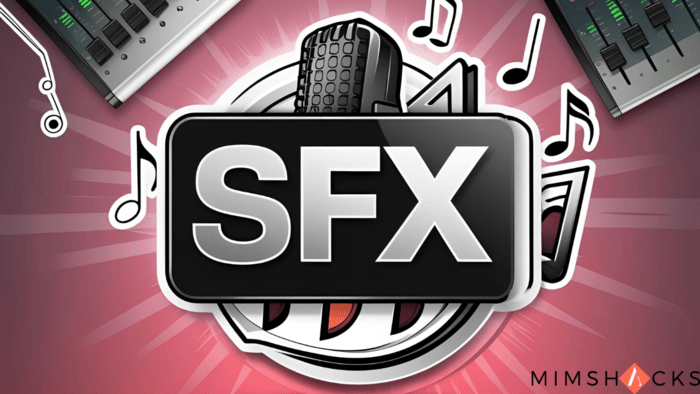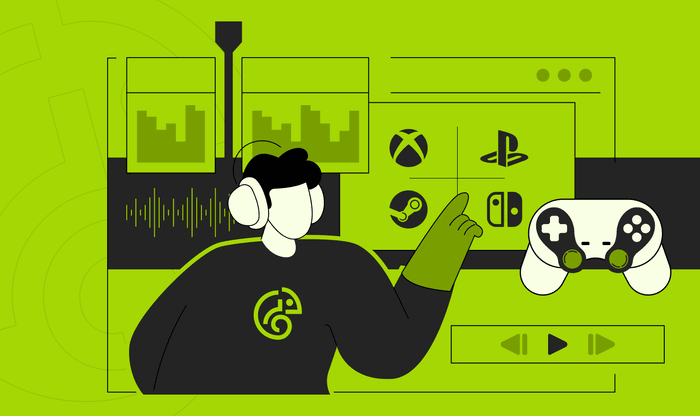How Does SFX Impact Games?
In video games, SFX (Sound Effects) are sounds created or enhanced to highlight key actions, environments, and events, significantly shaping the player’s auditory experience and immersion in the game.
Hey, audio fans and gamers! Today, we’re diving into a crucial element that often gets overlooked until it’s missing: SFX.
We’re not discussing new hardware – we’re exploring the sound effects that make our digital worlds come alive.
Let’s crank up the volume and take a closer look at the role of SFX in gaming!

What Are SFX in Video Games?
SFX, short for Sound Effects, are the audio elements used in video games to enhance the player’s experience.
These sounds, from a laser’s sharp zap to a dragon’s fierce roar, help bring the game world to life, making actions and events more immersive and authentic.
Types of Sound Effects Found in Games:
- Environmental Sounds: Rain, wind, footsteps
- Action Sounds: Explosions, gunshots, sword strikes
- UI Sounds: Menu interactions, achievement notifications
- Character Sounds: Grunts, breathing, dialogue
- Ambient Sounds: Background chatter, distant noises

The Origins of the Term “SFX”
The term “sound effects” traces back to the early days of radio and film. The shorthand “SFX” has been widely used in the entertainment industry for many years.
Sound effects have been an integral part of video games since the advent of arcade games. A prime example is the famous ‘waka waka’ sound from Pac-Man, one of the earliest iconic SFX in gaming.
As the industry progressed, so did the use of sound. With advancements in both graphics and technology, developers increasingly focused on creating more detailed and dynamic audio landscapes.
By the 1990s, CD-ROM games made high-quality digital audio common, cementing the role of SFX as a vital component in game development.
The Role of Audio in Interactive Experiences
Sound plays a crucial part in enriching the overall interaction. Here’s why it’s vital:
- Engagement: Sound makes the environment believable, pulling participants deeper into the experience.
- Response: Audio reacts instantly to user actions, making the interaction feel real-time.
- Emotion: The right sounds provoke emotional reactions, such as excitement, tension, or contentment.
- Signals: Many experiences use audio cues to notify users of important events, like an incoming threat.
- Mood Setting: Background audio sets the tone and atmosphere for various settings within the experience.
- Recognition: Certain sounds become linked with a particular experience, forming part of its identity (e.g., a distinctive tone when completing tasks).
- Usability: For users who may rely on sound over visuals, audio helps them navigate and understand elements.
- Reward: Well-crafted sounds make actions feel gratifying, enhancing the overall experience.
- Authenticity: In simulations, accurate audio enhances the feeling of realism.
- Advantage: In competitive settings, users can rely on sound to gather key information for decision-making.
Related Terms in Audio Design

When exploring the world of interactive audio, you might encounter these terms:
- Recreating Common Sounds: The practice of producing everyday noises that get added during final adjustments.
- Original Music: Composing background tunes that are unique to the experience.
- Ambient Sounds: Environmental sounds, such as nature or city noises, set the scene or atmosphere.
- In-Experience Audio: Sounds originating directly from within the interaction, like a voice or environmental noises.
- External Audio: Sounds without a direct source in the environment, such as background music or system notifications.
- Adaptive Audio: Sound that adjusts based on the user’s actions or the state of the interaction.
- Spatial Sound: Audio technology simulates sounds from different directions to create depth.
- Event Signals: Specific sounds inform users of changes or important happenings.
- Audio Creation: The process of designing and implementing sound into the interaction.
- Character Speech: The performance of voices for in-game characters or elements.
- Dynamic Sound: Audio generated in real-time based on parameters set within the experience.
- Sound Mixing: Balancing various sound elements to create a cohesive auditory experience.
By recognizing the importance of audio in interactive experiences, you can appreciate how it enhances your journey.
Audio brings everything to life, whether it’s a subtle sound in the background or a dynamic change in the action.
So, the next time you engage with an interactive experience, take a moment to listen to how much sound contributes to the overall experience.
Enjoy exploring the auditory landscape!





